Floor Mounted Column Jib Crane Main Structure & Installation
Floor mounted column jib cranes are hot sale for 500kg -16 ton load handling. The main structure, main parts & components, installation for your reference.
Floor mounted column jib crane is a kind of light working strength crane, which has the characteristics of light weight, large span, large lifting capacity, economical and durable. High mechanical efficiency, convenient installation, use and maintenance, and low cost. So what are the structures of the column jib crane?
Main structure and main parts and components of column jib cranes
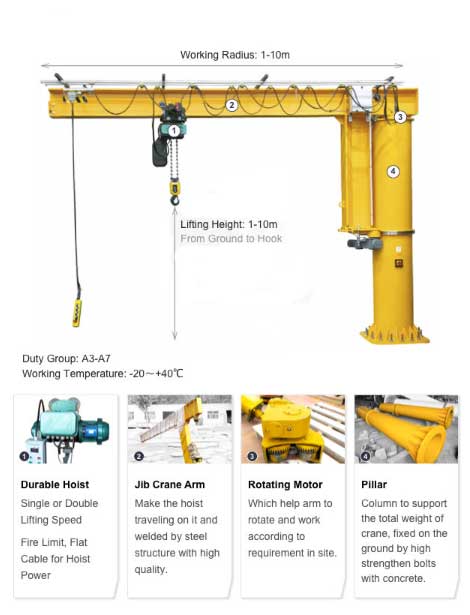
The main structure of a pillar jib crane consists of a vertical pillar or post that is mounted on a foundation, and a horizontal jib arm that extends from the pillar. The jib arm is attached to the pillar with a pivot point that allows it to rotate.
The parts and components of a pillar jib crane include:
- Pillar: The pillar is the vertical structure that supports the jib arm and allows it to rotate.
- Jib arm: The jib arm is the horizontal structure that extends from the pillar and supports the hoist and trolley.
- Pivot point: The pivot point is the connection between the pillar and the jib arm that allows the jib arm to rotate.
- Hoist: The hoist is the component that lifts and lowers the load.
- Trolley: The trolley is the component that moves the hoist along the length of the jib arm.
- Control system: The control system is the component that allows the operator to control the movement of the crane.
- Foundation: The foundation is the base on which the pillar is mounted and provides stability for the crane.
Pillar-mounted slewing jib crane structure:
- The pillar of the slewing jib crane is composed of a circular tube, with the base plate and the ends of the rotating shaft welded to it, and a waist ring track installed on the upper part. The base plate is fixed to the cement ground with chemical bolts to ensure the stability of the crane. A through hole is formed on the rotating shaft to hide the cable inside the column. The 360-degree collector can be installed on the rotating shaft, allowing the jib to rotate 360 degrees. The waist ring track is used for the rotation of the pillar-mounted slewing jib crane. Several small holes are installed on the track to install rotation limit blocks, which can achieve 0-360 degree angle limitation.
- The arm of the slewing jib is composed of I-beam and H-beam. It is suitable for the installation and operation of various chain hoists. A movable locking device is installed at both ends to ensure that the hoist works within a specific stroke.
- The support bracket of the slewing jib crane is welded with rectangular steel pipes and steel plates that support the jib. Triangular support, superior mechanical structure, light weight, and high safety. There are two rotating wheels under the bracket. The electric rotation of the pillar-mounted slewing jib crane is achieved by driving the active wheel through a light-duty worm gear reducer motor.
- The rotation device of the pillar-mounted slewing jib crane uses a circular tube as the housing and installs a self-aligning roller bearing inside to achieve free rotation of the jib. Due to the performance of the self-aligning roller bearing itself, even if there is a slight deviation in concentricity between the waist ring and the pillar, it can ensure the safe use of the slewing jib crane.
- The C-shaped track can be installed on the rotating arm of the slewing jib crane for installing power cables for electric hoists. It has a small and beautiful appearance and strong applicability.
Procedures of pillar jib crane installation
Here's a general guide on how to install a pillar jib crane:
- Choose the location: The first step is to choose the location where the pillar jib crane will be installed. The location should be level, sturdy, and able to support the weight of the crane and the load it will be carrying.
- Prepare the foundation: The next step is to prepare the foundation for the crane. This involves digging a hole and pouring concrete to create a stable base for the crane. The size and depth of the foundation will depend on the size and weight of the crane.
- Install the pillar: After the foundation has been prepared, the pillar can be installed. The pillar should be bolted securely to the foundation to ensure stability.
- Install the jib arm: The next step is to install the jib arm onto the pillar. The jib arm should be aligned properly with the pillar and bolted securely in place.
- Install the hoist: The final step is to install the hoist onto the jib arm. The hoist should be attached securely to the jib arm and wired properly to ensure safe operation.
- Test the crane: Once the installation is complete, it is important to test the crane to ensure that it is working properly. This involves lifting a test load and checking that the crane is able to move smoothly and safely.
It is important to note that installation of a pillar jib crane should only be carried out by qualified professionals who have experience in installing and operating these types of cranes. It is also important to follow all safety guidelines and regulations when installing and operating a pillar jib crane to ensure safe and efficient operation.
Presentation of Floor Mounted Jib Crane Installation
Floor mounted jib crane is the most widely used lifting equipment in production today. What are the advantages of fixed column cantilever crane? It has high reliability and is suitable for frequent lifting tasks in short distances. It is flexible in operation and greatly improves work efficiency. So how is the fixed column jib crane installed? The following is a graphic explanation for you.
Column Installation
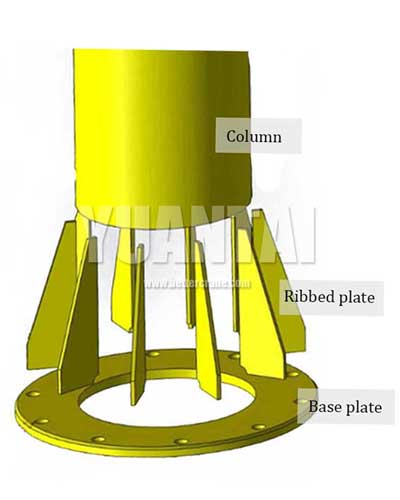
Sleeve the column into the inner ring of the bottom plate, weld and fix the bottom plate and the column on both sides of the bottom plate, then weld a number of ribs to the bottom plate and the column to complete the cantilevered bottom plate installation of the column.
Installation of End Plate and Waist Ring Track
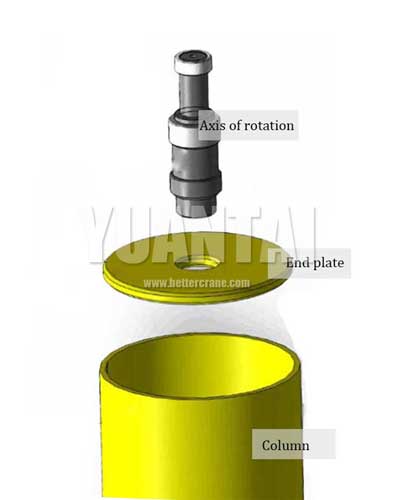
First, adjust the position of the rotating shaft of the column crane and the end plate and then weld and fix it to ensure the verticality of the rotating shaft. Then put the end plate into the column and weld and fix it with the column according to the size of the drawing. Sleeve the waist ring track into the column, adjust the corresponding position according to the size of the drawing, weld and fix it with the column to complete the installation.
Installation of Rotary Sleeve
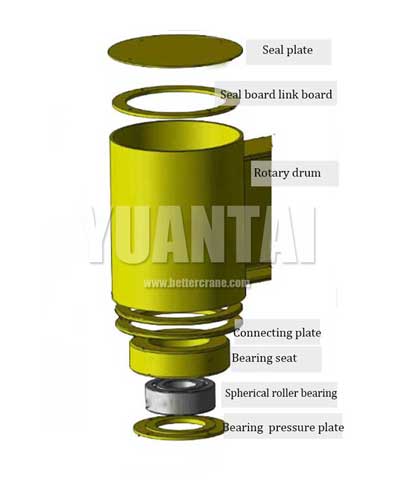
The bearing seat and the revolving cylinder are welded and fixed according to the size of the drawing through the connecting plate, and pressed into the spherical roller bearing, and then the left side of the revolving sleeve is sealed with the bearing pressure plate. The connecting plate of the sealing plate is welded on the right side of the rotating cylinder, and the sealing plate is connected by bolts. The sealing plate is removed during on-site installation, and the current collector is installed inside the rotating sleeve. After the internal parts of the rotating sleeve of the column cantilever crane are installed, the sealing plate is installed and the installation is completed.
Bracket Installation
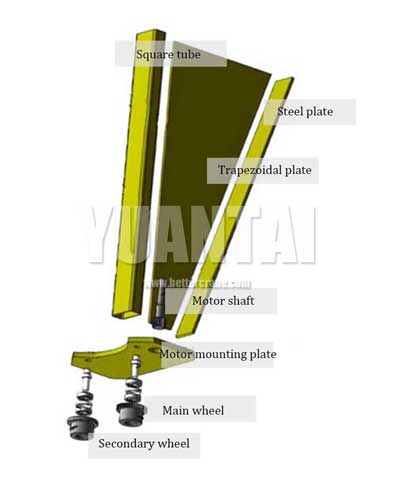
First weld the shaft to the motor mounting plate, install the main wheel and the auxiliary wheel, and then weld and fix the square tube, trapezoidal plate and steel plate according to the dimensions of the drawing. According to the size of the drawing, the bracket is welded to the cantilever to complete the installation.
On-site Installation of The Free Standing Jib Crane
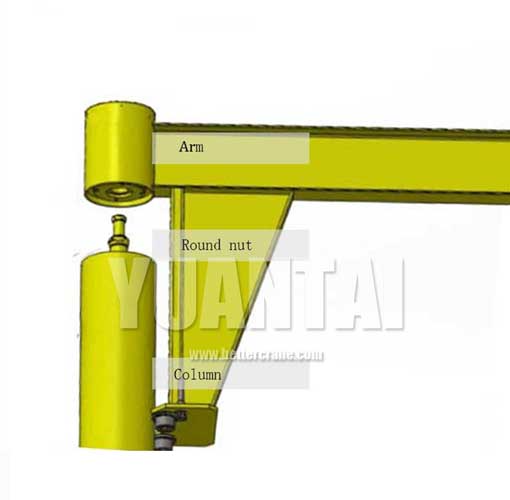
When installing on site, remove the round nut on the column, fix the cantilever on the column through the rotating shaft and waist ring track, then install the round nut on the rotating shaft from the inside of the slewing device, and then install the slip ring and lock in turn Polyurethane nuts. The round cable passes through the inside of the column, passes through the center hole of the rotating shaft, and then enters the slip ring slewing device. The slip ring bracket and carbon brushes are installed inside the slewing device. In the control cabinet, through the contactor switch in the electric control cabinet,
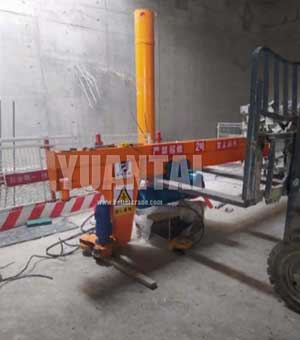 Floor mounted pillar mounted jib crane installation
Floor mounted pillar mounted jib crane installation 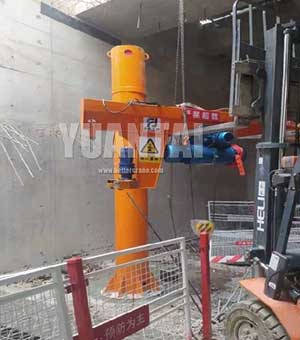 Floor mounted column jib crane arm installation
Floor mounted column jib crane arm installation 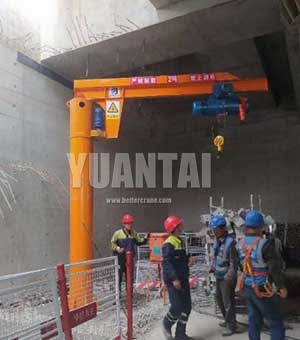 Finished installation of freestanding column jib crane
Finished installation of freestanding column jib crane



